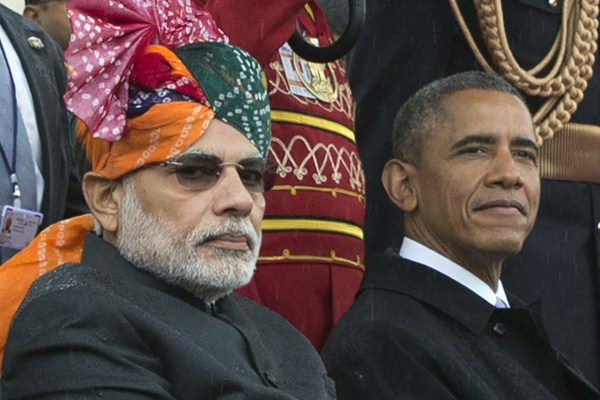In contrast to Indian Prime Minister Narendra Modi’s five-day visit to the United States in September, which appeared to be something of an anticlimax for yielding few concrete results, U.S. President Barack Obama’s quick trip to India this week has seen progress in many important areas. In retrospect, it appears that Modi’s visit helped create a warm bond between the two leaders, evident when Modi broke protocol to personally greet Obama at the airport upon his arrival. The two leaders’ personal rapport has clearly facilitated dialogue to overcome past grievances in the bilateral relationship.
From being primarily a short-term transactional relationship, as critics have long complained, U.S.-India ties have begun to focus on achieving long-term mutual gains. U.S. policy aims to boost India in general, with a long-term expectation of payoff in terms of balancing China, enhancing regional security and promoting economic ties. As a passage in their joint statement put it, Washington recognizes “that India’s rise is also in the interest of the United States, regional and global stability, and global economic growth.” For its part, India seeks energy and security assistance as well as other benefits.
Of course, while building long-term diplomatic capital is important, leaders do need some near-term results to keep the relationship from stalling, as it had during Obama’s first term. In this regard, the U.S.-India Civil Nuclear Cooperation Agreement, whose details have yet to be released, has apparently created a state-backed insurance scheme to overcome Western companies’ concerns about India’s unlimited liability law for nuclear operators in the country. It also reportedly resolved the problem of keeping track of nuclear materials provided by the U.S to India. Even if no sales result from the agreement, the two governments can affirm that they have met their obligations and created an acceptable mechanism that private firms can use if they so choose.

